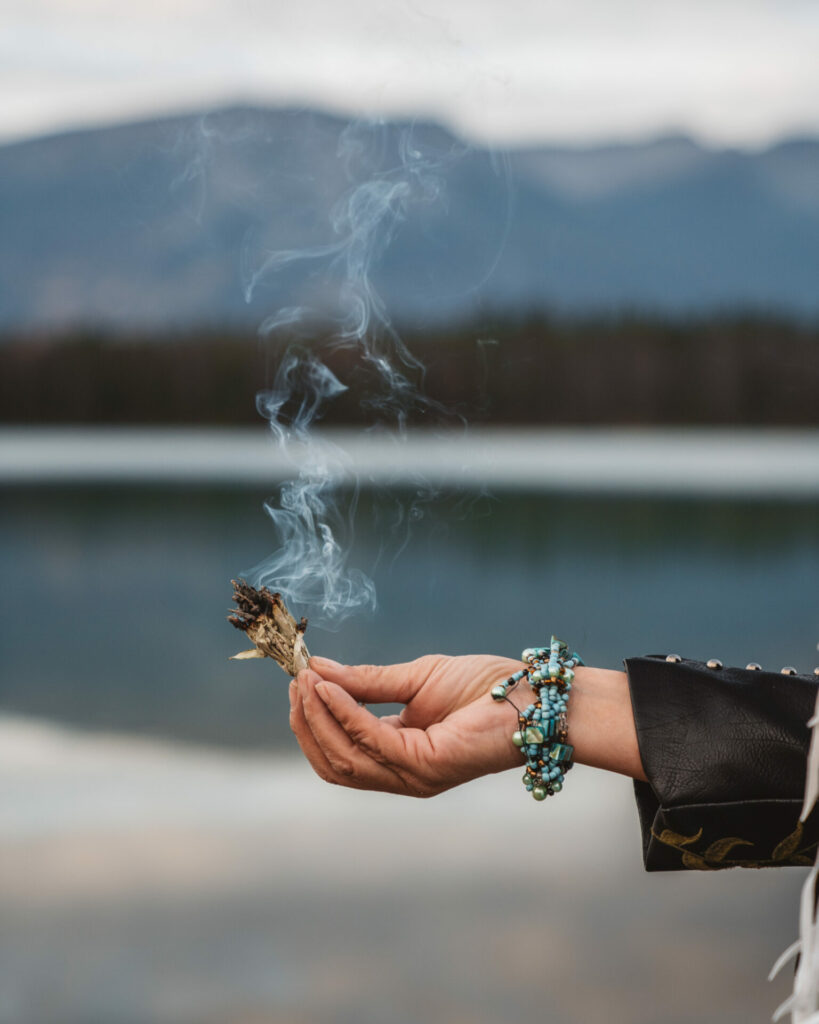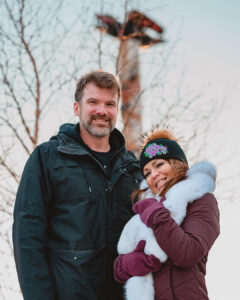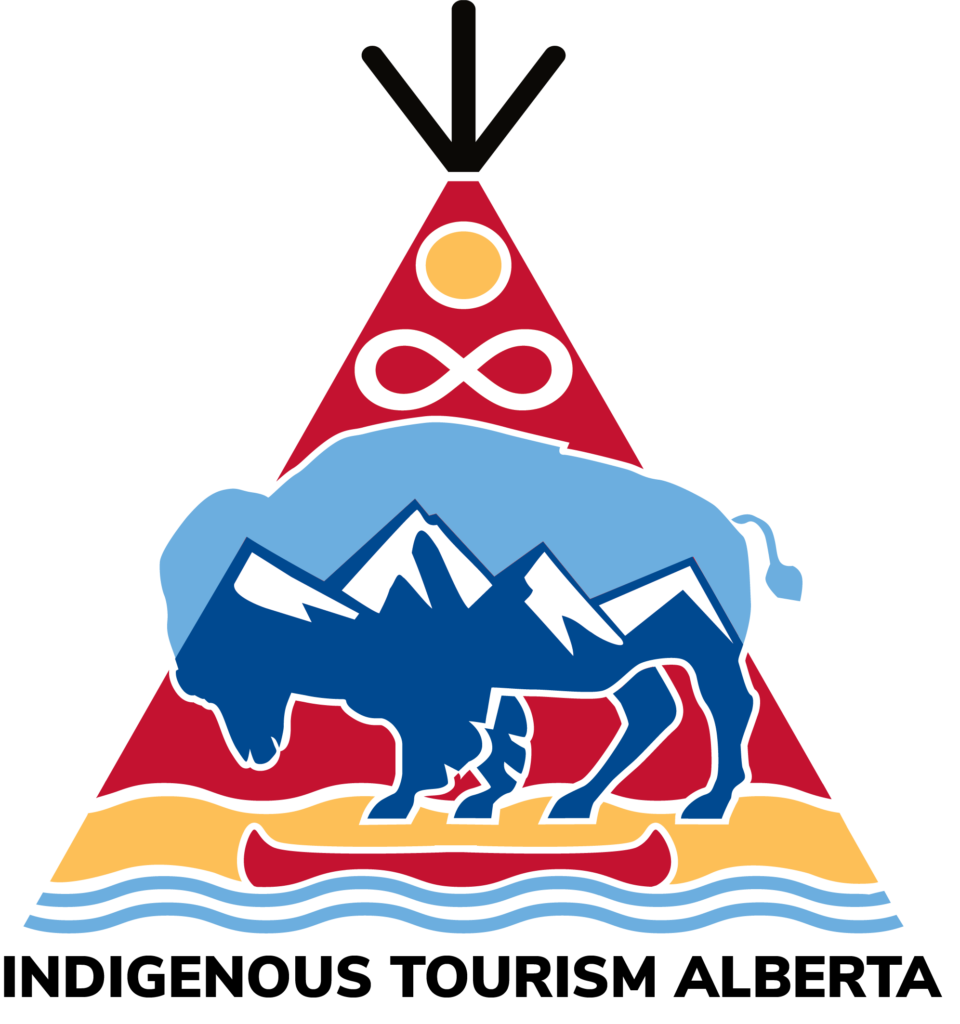
Transforming Lateral Violence into Lateral Kindness in the Indigenous Tourism Industry
A collaborative blog with Lateral Kindness Educator and Advocate Marilyn Jensen from Indigenous Tourism Association of Canada
Indigenous Tourism Alberta’s Development team saw a need for awareness on lateral violence. It is a topic that has repeatedly come up while facilitating workshops across the province this year. This blog intends to shed light on a dark issue to provide helpful tools and resources for ITA members who may experience lateral violence within their work in the Indigenous tourism industry.
Internally, the Indigenous Tourism Alberta team all took part in a Lateral Kindness Workshop facilitated by Marilyn Jensen and Thomas Shepherd, based in the Yukon. Marilyn and Thomas have been facilitating Lateral Kindness workshops since 2013 and have worked with Indigenous communities in the Yukon, British Columbia, Alberta, Newfoundland, and Australia. Marilyn and Thomas came together to create Lateral Kindness workshops because they saw the deep need for healing in Indigenous communities suffering from the prevalent issue of lateral violence.
With love and respect for Indigenous people’s strength and resilience, we acknowledge that this blog topic may be triggering for those directly impacted by lateral violence and intergenerational trauma as a direct result of colonialism.
“We see it is becoming a rallying call and movement to reject lateral violence and hold up lateral kindness. This is a reclamation of our true Indigenous identity.”
– Marilyn Jensen,
Yadultin and Dūsts’ā̀dle, is Inland Tlingit and Tagish Khwáan from the Carcross/Tagish First Nation; belonging to the Dakhl’aweidí Clan under the Tagish Keét Hít (Killerwhale House) in the Southern Yukon Territory

What is Lateral Violence?
Lateral violence is a term used to describe emotional violence within Indigenous communities when members of the same community bring each other down through harmful behaviors. Lateral violence occurs between people from the same group of belonging, such as family, clan, nation, Indigenous groups, etc. Lateral violence causes immense harm when it is happening from your circle of belonging. Emotional violence is described as non-verbal communications, demeaning word-set, and is painful to experience. Lateral/Emotional violence can look like toxic behaviors such as gossip, bullying, backhanded “jokes,” sabotaging, public “call-out culture,” negative body language, mean words, and ultimately disempowering another person with harmful actions.
Where does Lateral Violence come from?
The root cause of lateral violence in Indigenous communities comes from colonization. Collectively, we must recognize that lateral violence is not aligned with our traditional teachings, guidelines, laws, and how we originally interacted with each other. The history of colonization on Indigenous lands, including Canada, has been traumatic, genocidal, extractive, and violent displacement of traditional ways of life. The violent behaviors and treatment of one another are repeated cycles of pain from how children were treated in Residential Schools. To heal, we need to be aware of lateral violence and see the prevalent issue as a symptom of colonialism.
Why do Indigenous Entrepreneurs in tourism need awareness about the issue of Lateral Violence?
Today, many Indigenous peoples are working to heal, be self-sustaining, and contribute positively to their communities but are experiencing lateral violence from their belonging groups. Those stepping up to challenges of being in leadership roles, starting a business, getting an education, or revitalizing their language and culture may become an easy target for those in their community who release their pain through lateral/emotional violence. Specifically, in the industry of Indigenous tourism, lateral violence can be seen through comments like “you have our culture for sale” or “what a sell out” referring to Indigenous tourism operators working to provide for themselves and their families.
At ITA, we are committed to sharing awareness about lateral violence because we recognize our members may be affected by it. Indigenous tourism and cultural sharing help provide for yourself while uplifting your own authentic story and voice.
Today, there needs to be awareness of lateral violence so that Indigenous peoples across Alberta can work together through healthy partnerships and stop the perpetual cycle of pain inflicted on one another in times of opportunity. Together, we need to be accountable to the teachings of kindness in our words and actions when doing this work.
How does Lateral Violence relate to Indigenous Tourism specifically?
Lateral violence can show up frequently amongst plans for community economic development initiatives, members from the same group of belonging sabotaging new business start-ups, and cultural sharing events. Lateral violence can even show up as lost opportunities for partnerships and collaborations in tourism development with other nations, settlements, organizations, or Indigenous entrepreneurs. Many tourism initiatives at a grassroots level have the intention to create revenue and support economic growth and sovereignty. However, initiatives can be sabotaged by community members, which overall hurts the whole community.
How can Members of Indigenous Tourism Alberta be proactive in mitigating lateral violence within their businesses or communities?
As a team in your workplace or community, collaboratively create guidelines for a safe space. Guidelines help everyone understand what the expectations are in shared working environments and tourism initiatives. Having set guidelines helps mitigate lateral violence from occurring because there is an awareness set on acceptable behavior.
For example, recently in ITA workshops, there are Guidelines now for sharing a safe space, including respect, being kind and honest with words, and having an open heart and mind.
If lateral violence does occur, have a proactive and positive approach prepared beforehand. For example, in a tourism experience, if a visitor uses disrespectful language and makes others uncomfortable, perhaps a confident staff member is trained to speak up positively to mitigate more harm from occurring. Always refer back to the set guidelines to remind visitors or community members about appropriate behavior. Look into resources for lateral violence prevention tactics to help yourself and your staff.
What is some advice to Members who may be experiencing Lateral Violence?
Understand what lateral violence is and where it comes from so that you can detach from taking on others pain as your own emotional pain. Take a breath, and remember that often there is hurt behind these behaviors. What may be going on under the surface? Intergenerational trauma is rampant within Indigenous kin’s unhealthy behaviors, and you may be a target to release their pain. Once you have a sound foundational understanding of lateral violence, build your confidence to speak up against lateral violence without causing further harm. Remember not to take other people’s pain as your own. Be assured of your authenticity and positive intentions of the work you are doing. Reflect on traditional teachings in your community that speak to kindness, respect, love – how our ancestors interacted with one another. Be a good relative to one another.
kisewâtisiwin, oil painting by BB Iskwew (Kayla Bellerose), 2019.
What is Lateral Kindness?
Lateral kindness is the reclamation of our culture and authentic identity as Indigenous peoples. Respect is foundational teaching in Indigenous cultures across Turtle Island and is a guiding principle in decolonization efforts. Collectively we must hold up lateral kindness as a way to decolonize our relationship with one another to heal and move forward together to create a healthier future. The saying “community over competition” is a good starting point to supporting lateral kindness and work together to thrive. Instead of competing against each other for opportunities and resources, take the time to build reciprocal relationships and partnerships where wealth, prosperity, and success can be shared amongst communities. We are stronger together.
Remember that lateral violence does not define Indigenous peoples and does not reflect our traditional ways of life and teachings. Lateral kindness is a call to action to transform pain into acts of healing. This work needs to be done so all of our future generations can have a good life.
We express gratitude to Marilyn Jensen for sharing valuable information about lateral kindness and helping support the healing of Indigenous communities across Canada from the prevalent issue of lateral violence. Finally, we thank Elder Fred Campiou for sharing teaching about kisewâtisiwin – kindness to finish this blog in a good way.
“Creator – Great Spirit gave us all equally the great gifts of life and it is all of our responsibility to treat these gifts in a kind and respectful way – and to treat each other in a kind and respectful way. We must take care of these gifts for future generations.”
Elder Fred Campiou from Driftpile Cree Nation
Tools and Resources
Lateral Violence Awareness Video by Bear Media and Education
Métis Women’s Strength-based Kindness Tool Kit
Native Women’s Association of Canada – Aboriginal Lateral Violence
Marilyn Jensen and Thomas Sheppard’s Lateral Kindness Workshop

